MA Thesis by Ozan A Altınok

This work primarily aims to clarify the subject of reduction and reductionism especially in the d... more This work primarily aims to clarify the subject of reduction and reductionism especially in the domain of reduction of classical biology to molecular biology. As a part of a larger project that tries to understand sciences as a manifold of practices. Reduction in science has been one of the most fundamental subjects in philosophy of science. This work brings a novel approach to reduction from a non-idealist perspective. The previous discussions on reduction has been debated under theory reduction, while this work tries to give account of reduction in science retaining a pragmatic posture that is centered around practices of science but not theories. Focusing philosophy of science on real scientific practices rather than solely theories is stance I share with Ian Hacking. Through this investigation, this work outlines the basic features of classical biology and molecular biology in general, and tries to point out the difficulties that the traditional, idealistic reductionist account creates, accusing them of being unable to account for real scientific progress in the sciences of biology and molecular biology. While doing that, this work also tries to sketch the metaphysical backgrounds of reductionist programmes, finally putting them in their proper places in scientific inquiries.
Book Reviews by Ozan A Altınok
In this, I try to lay out the fundamentals arguments of Peter Godfrey-Smith's Philosophy of Biolo... more In this, I try to lay out the fundamentals arguments of Peter Godfrey-Smith's Philosophy of Biology. For the most part, this is a summary, however it also provides criticsm to an extent between the lines.
Kongre Bildirileri by Ozan A Altınok

Modern anlamıyla bilim felsefesi, – eğer hatalı da olsa bir başlangıç noktası bulmak gerekirse – ... more Modern anlamıyla bilim felsefesi, – eğer hatalı da olsa bir başlangıç noktası bulmak gerekirse – mantıkçı pozitivist başlangıcından beri, büyük bakış açısı değişiklikleri göstermiştir. Bu değişiklikler temelde bilimi bir kapalı kutu olarak gören ve bilimin zenginliği yerine " gözlem cümleleri " üzerine konuşmayı uygun bulan mantıkçı pozitivist bakış açısının baskınlığı, bilimi daha geniş anlamda – bilimin tarihini, sosyal ağlarını, kullandığı araçları, deneyleri, gözlemleri vs. – ele alan, dönüşebilen bir " bilim imgesini " savunan Kuhn, Lakatos, Hacking, Cartwright, van Fraassen gibi felsefeciler tarafından eleştirilmiş ve bu felsefecilerin savundukları eksenlerde genişlemiştir. Bu genişleme genel anlamda tartışılmış, fakat bilim felsefesinin özel uygulamaları – bu örnekte bilimsel indirgeme – bu tip yeni bakış açılarıyla sistematik olarak çok fazla incelenmemiştir. Bilimsel indirgeme konusunu felsefedeki her konu gibi daha geniş çerçevede incelemek büyük katkılar sağlayacaktır. Ben burada, Wimsatt'ın (1976) bilimsel indirgemede mantıksal modellerden ibaret bir şemaya olan itirazını ve onun üzerine eklenen Ian Hacking (1983) ve Nancy Cartwright'ın (1984) bilimsel gerçekçiliğe yönelik tutumlarını bilimin gerçek işleyişine daha yakın buluyorum. Onların bakış açısını merkeze alıp Galison'ın (1987) fizikte araçlara ve deneysel geleneklere yönelik vurgusunu klasik biyolojinin moleküler biyolojiye indirgenmesindeki epigenetik açıklamaların güç kazanmasıyla ek olarak örneklendirip, bilimsel indirgemedeki köprü yasalar ya da köprü kurallarla özdeşlik ilişkileri ve bunların uygulanması sorununun bilimin kullandığı, etkilediği, müdahale edebildiği ve nedensel etkileri bulunan varlıkların gerçekliği üzerine kurulduğunda çözülebileceğini iddia ediyorum. Bununla birlikte bilimin asıl kullandığı felsefi konumun genel anlamda pragmatizm olduğunu vurgulayıp, bilimde indirgemenin de ancak pragmatik temeldeki bir yaklaşımla daha geniş çerçevede bilgi sunabileceğini ve mantıksal modellemeci bilimsel indirgeme tutumlarının bilimdeki gelişmeleri miyop görmeye sebep olduğunu, yani uzun vadede ve geniş çerçevede bilimin incelemesini zorlaştırdığını iddia ediyorum. Kapsamlı bir inceleme yapmak zor olduğu için, bu çalışmayı genel bir yol haritası çizme aracı olarak görüyorum. Bilimin başarısı, hem gündelik hayatta, hem de felsefe çevreleri içinde yaygın olarak dillendirilen bir kabuldür. Bu tutumun belki de en üst noktası kendisini Kant'ta gösteren, " metafiziği bilimin güvenli yoluna sokma " çabasıdır. Felsefede bilimsel gerçekçilik olarak adlandırılan temel pozisyon da büyük ölçüde kendisini bilimin başarısı kabulüne borçludur. Her ne kadar bilimin başarısının sebepleri çeşitli şekillerde tartışılmış ve bu nedenler örneğin Feyerabend'in bakış açısında belirli bir forma sokulmaya karşı çıkılmış olsa da, bilimsel gerçekçiliğin başta gelen
Çeviriler/Translations by Ozan A Altınok
Papers by Ozan A Altınok

Metascience, Oct 28, 2023
The Genesis of Techno Scientific Revolutions is a book about how science and research has develop... more The Genesis of Techno Scientific Revolutions is a book about how science and research has developed from the perspective of two experts who have been working at Bell Labs their entire careers. Coming from a perspective of practical expertise, it could be claimed that the authors are, at the core, "counter idealists" about how science and engineering function. Rather than making assumptions about how science, or engineering, or any other research activity is supposed to work, they focus on how it has worked in practice. As a result, the book can be considered a contribution to "philosophy of science in practice" (PSP), but the authors go even further in depicting the structures in which research and development take place than prescribed by the ideals of PSP. Although the authors are writing about "how science is" rather than how "it should be" ideally, they do answer the question of how science should be from their own holistic experience, including their reflection from their own experience, which is remarkably valuable. There is an opponent that the authors have in mind. It is a view still held by many, even those conducting scientific research. It is that science "determines" the limitations of technology, and the pace of technological development is thus limited by scientific development. The authors argue that there is always something fundamental about any kind of technological application and so there is necessarily a relationship toward fundamental research. In this sense, they contextualize research (not only science) not as restrictive as logical positivists, but not in the sense that any theory is free to be used without restraint. Unlike the unstructured liberty that is usually associated with postmodern understandings of science, they build many well-structured models in which transfers of distinct kinds of reasonings, practices, and structures are possible within different parts of technoscience. The title of the book is insightful. As Ian Hacking writes in Representing and Intervening, book titles mean a lot as they reflect how an author positions their
Ethics of Science and Technology Assessment

Although the traditional approach within ELSA (Ethical, Legal and Social Aspects) initiatives is ... more Although the traditional approach within ELSA (Ethical, Legal and Social Aspects) initiatives is to have certain kinds of objects "set" or ready to be governed within bioethics, I will claim that the established regime of bioethics and bio law act as governance while influencing the conceptualization of the entities at play, in this example, the organoids. As a small contrast case to making organoids, I will use the regulation and categorization of embryonic research as a more "natural kind" entity research compared to conceptually synthetic research, where the objects to be regulated are shaped by existing practices of language and material alike. While analyzing the conceptual making of the organoids, I will follow the general methodological framework of Ian Hacking in Social Construction of What? (1999) from philosophy of science, particularly his understanding of "looping kinds". And since Hacking's understanding of looping kinds is in a relatively vague formulation, I will supply with different structures within co-productionist account of science and technology studies, most notably of works of Jasonoff (2015) of coproductionist accounts and Bensaude-Vincent's concept of "buzzword coalitions" (2014) in the making of conceptual coalition around organoids. I will use the structure of scientific objects to assign different uses of parts of concepts in the making.

Evolution, Medicine, and Public Health, 2021
Research in infection biology aims to understand the complex nature of host–pathogen interactions... more Research in infection biology aims to understand the complex nature of host–pathogen interactions. While this knowledge facilitates strategies for preventing and treating diseases, it can also be intentionally misused to cause harm. Such dual-use risk is potentially high for highly pathogenic microbes such as Risk Group-3 (RG3) bacteria and RG4 viruses, which could be used in bioterrorism attacks. However, other pathogens such as influenza virus (IV) and enterohemorrhagic Escherichia coli (EHEC), usually classified as RG2 pathogens, also demonstrate high dual-use risk. As the currently approved therapeutics against these pathogens are not satisfactorily effective, previous outbreaks of these pathogens caused enormous public fear, media attention and economic burden. In this interdisciplinary review, we summarize the current perspectives of dual-use research on IV and EHEC, and further highlight the dual-use risk associated with evolutionary experiments with these infectious pathogen...

Asian Studies, 2019
In this paper, my main aim is to analyse Mao’s conception of Marxist theory and his Marxist subje... more In this paper, my main aim is to analyse Mao’s conception of Marxist theory and his Marxist subjectivity in theory construction in his three articles. While doing so, I will use two main approaches, first is the idea that Karl Marx’s method in understanding social relations and his theory of knowledge is in many aspects compatible and in continuation with an epistemological reading of Hegel’s subjectivity, and the second is the general structure about the relationship between the object and subject’s process of knowing is similar in all three thinkers. While doing so, I will advocate the position that Mao’s epistemology is compatible with the Marxist understanding of Hegelian epistemology, and that from such an epistemological understanding it is possible to investigate Mao’s three texts in a way that yields, not an orthodox or “end result” Marxism, but instead a more general, meta epistemological understanding of Marx, that is understood better structurally. Eventually, I will clai...
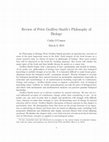
In Philosophy of Biology, Peter Godfrey-Smith provides an introductory overview of some of the mo... more In Philosophy of Biology, Peter Godfrey-Smith provides an introductory overview of some of the most important areas in the field. Each chapter of the book focuses on a major research topic (or cluster of topics) in philosophy of biology. Since most readers here will be interested in the book for teaching purposes, this review will outline the main topics of the book and then briefly discuss its merits as a course text. Godfrey-Smith begins with a discussion of laws, mechanisms and models in biology. As he points out, philosophers of biology have largely rejected the idea that biological knowledge is usefully thought of as law-like. It is famously difficult to make broad generalizations about the biological world—exceptions abound. Recent attempts to account for biological knowledge have instead focused on mechanistic explanation (especially in molecular and neurobiology) or on mathetmatical modeling (especially in evolutionary biology and ecology). Godfrey-Smith seems to support a p...
Journal of Clinical Microbiology, 2020
Staphylococcus aureus ST45 is a major global MRSA lineage with huge strain diversity and a high c... more Staphylococcus aureus ST45 is a major global MRSA lineage with huge strain diversity and a high clinical impact. It is one of the most prevalent carrier lineages but also frequently causes severe invasive disease, such as bacteremia. Little is known about its evolutionary history. In this study, we used whole-genome sequencing to analyze a large collection of 451 diverse ST45 isolates from 6 continents and 26 countries. De novo -assembled genomes were used to understand genomic plasticity and to perform coalescent analyses.

Staphylococcus aureus ST45 is a major global MRSA lineage with huge strain diversity and a high c... more Staphylococcus aureus ST45 is a major global MRSA lineage with huge strain diversity and a high clinical impact. It is one of the most prevalent carrier lineages but also frequently causes severe invasive disease, such as bacteremia. Little is known about its evolutionary history. In this study, we used whole-genome sequencing to analyze a large collection of 451 diverse ST45 isolates from 6 continents and 26 countries. De novo-assembled genomes were used to understand genomic plasticity and to perform coalescent analyses. The ST45 population contained two distinct sublineages, which correlated with the isolates' geographical origins. One sublineage primarily consisted of European/North American isolates, while the second sublineage primarily consisted of African and Australian isolates. Bayesian analysis predicted ST45 originated in northwestern Europe about 500 years ago. Isolation time, host, and clinical symptoms did not correlate with phylogenetic groups. Our phylogenetic analyses suggest multiple acquisitions of the SCCmec element and key virulence factors throughout the evolution of the ST45 lineage.

Integrating Evolutionary Aspects into Dual-Use Discussion: The Cases, 2021
27 Research in infection biology aims to understand the complex nature of host-pathogen interacti... more 27 Research in infection biology aims to understand the complex nature of host-pathogen interactions. 28 While this knowledge facilitates strategies for preventing and treating diseases, it can also be 29 intentionally misused to cause harm. Such dual-use risk is potentially high for highly pathogenic 30 microbes such as Risk Group-3 (RG3) bacteria and RG4 viruses, which could be used in bioterrorism 31 attacks. However, other pathogens such as influenza virus (IV) and enterohaemorrhagic Escherichia 32 coli (EHEC), usually classified as RG2 pathogens, also demonstrate high dual-use risk. As the 33 currently-approved therapeutics against these pathogens are not satisfactorily effective, previous 34 outbreaks of these pathogens caused enormous public fear, media attention, and economic burden. In 35 this interdisciplinary review, we summarize the current perspectives of dual-use research on IV and 36 EHEC, and further highlight the dual-use risk associated with evolutionary experiments with these 37 infectious pathogens. We support the need to carry-out experiments pertaining to pathogen evolution, 38 including to gain predictive insights on their evolutionary trajectories, which cannot be otherwise 39 achieved with stand-alone theoretical models and epidemiological data. However, we also advocate 40 for increased awareness and assessment strategies to better quantify the risks-versus-benefits 41 associated with such evolutionary experiments. In addition to building public trust in dual-use 42 research, we propose that these approaches can be extended to other pathogens currently classified as 43 low risk, but bearing high dual-use potential, given the particular pressing nature of their rapid 44 evolutionary potential. 45

In this paper, my main aim is to analyze Mao's conception of Marxist theory and his Marxist subje... more In this paper, my main aim is to analyze Mao's conception of Marxist theory and his Marxist subjectivity in theory construction in his three articles. While doing so, I will use two main approaches, first is the idea that Karl Marx's method in understanding social relations and his theory of knowledge is in many aspects compatible and in continuation with an epistemological reading of Hegel's subjectivity, and the second is the general structure about the relationship between the object and subject's process of knowing is similar in all three thinkers. While doing so, I will advocate the position that Mao's epistemology is compatible with the Marxist understanding of Hegelian epistemology, and that from such an epistemological understanding it is possible to investigate Mao's three texts in a way that yields, not an orthodox or "end result" Marxism, but instead a more general, meta epistemological understanding of Marx, that is understood better structurally. Eventually, I will claim that while using "scientific" or "orthodox" Marxism as a method to understand society, Mao further uses the subjective element in the same way as Hegel and Marx used it, although eventually, he diverts the Marxist subjective maneuver to another direction.

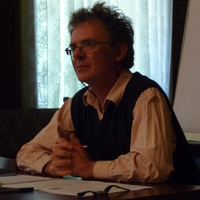

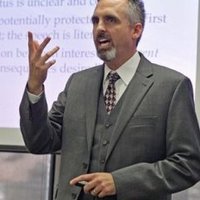

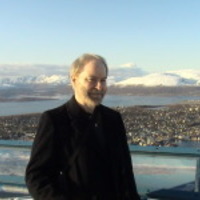




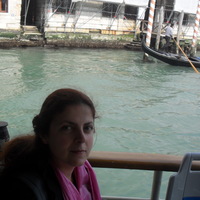
Uploads
MA Thesis by Ozan A Altınok
Book Reviews by Ozan A Altınok
Kongre Bildirileri by Ozan A Altınok
Çeviriler/Translations by Ozan A Altınok
Papers by Ozan A Altınok